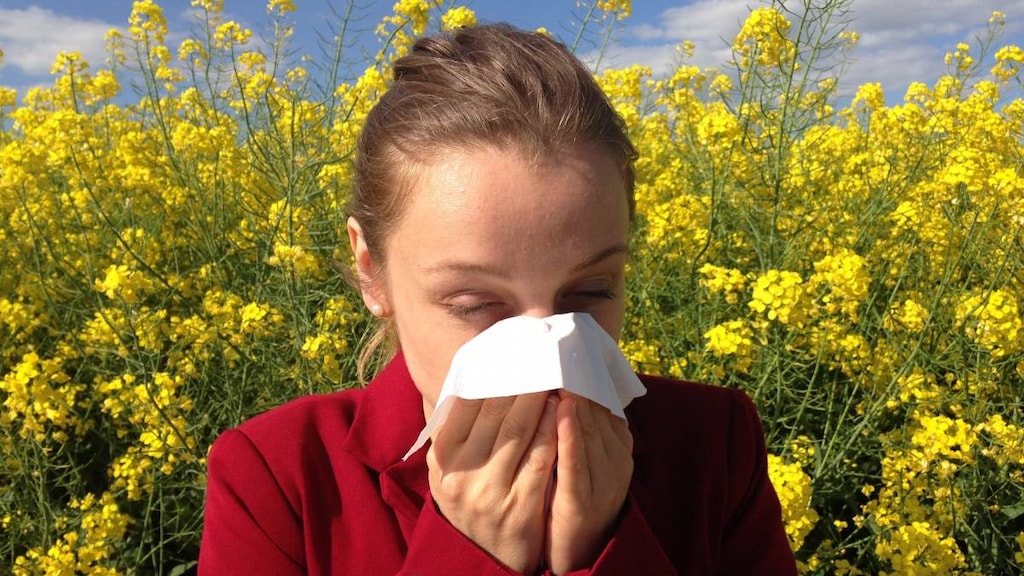Dosage Forms
Excipient information presented when available (limited, particularly for generics); consult specific product labeling. [DSC] = Discontinued product
Suspension, Nasal:
Rhinocort Allergy: 32 mcg/actuation (5 mL [DSC], 8.43 mL) [contains disodium edta, polysorbate 80]
Rhinocort Aqua: 32 mcg/actuation (8.6 g [DSC]) [contains disodium edta, polysorbate 80]
Generic: 32 mcg/actuation (8.6 g [DSC], 8.43 mL)
Pharmacology
Mechanism of Action
Controls the rate of protein synthesis; depresses the migration of polymorphonuclear leukocytes, fibroblasts; reverses capillary permeability and lysosomal stabilization at the cellular level to prevent or control inflammation. Has potent glucocorticoid activity and weak mineralocorticoid activity.
Pharmacokinetics/Pharmacodynamics
Distribution
~2 to 3 L/kg
Metabolism
Hepatic via CYP3A4 to two metabolites: 16 alpha-hydroxyprednisolone and 6 beta-hydroxybudesonide; both are <1% as active as parent
Excretion
Urine (~66%) and feces as metabolites
Onset of Action
Rhinocort Aqua: Within 10 hours; Peak effect: Up to 2 weeks
Time to Peak
Plasma: Nasal: 30 minutes
Half-Life Elimination
2 to 3 hours
Protein Binding
85% to 90%
Use: Labeled Indications
US labeling:
Rx: Allergic rhinitis: Management of symptoms of seasonal or perennial allergic rhinitis in adults and children ≥6 years.
OTC: Upper respiratory symptoms: Relief of symptoms of hay fever or other upper respiratory allergies (eg, nasal congestion, runny nose, itchy nose, sneezing) in adults and children ≥6 years.
Canadian labeling:
Nasal polyps: Treatment of nasal polyps; prevention of nasal polyps after polypectomy.
Rhinitis: Management of symptoms of seasonal allergic, perennial, and vasomotor rhinitis unresponsive to conventional therapy.
Use: Off Label
Acute bacterial rhinosinusitis, adjunct to antibiotics (empiric treatment) yes
Based on the Infectious Diseases Society of America (IDSA) guidelines for acute bacterial rhinosinusitis (ABRS) in children and adults and the American Academy of Otolaryngology-Head and Neck Surgery Foundation (AAO-HNS) guidelines for adult sinusitis, budesonide (nasal), among other intranasal corticosteroids, is effective and recommended as an adjunctive treatment to antibiotic therapy for the management of ABRS primarily when a history of allergic rhinitis exists (according to IDSA guidelines).
Chronic rhinosinusitisyes
Based on the American Academy of Otolaryngology-Head and Neck Surgery Foundation (AAO-HNS) guidelines for adult sinusitis, budesonide (nasal), among other intranasal corticosteroids, is effective and recommended (with or without nasal saline irrigation) for the symptomatic relief of chronic rhinosinusitis.
Contraindications
Hypersensitivity to budesonide or any component of the formulation
OTC labeling: When used for self-medication, do not use in children <6 years of age.
Canadian labeling: Additional contraindications (not in US labeling): Tuberculosis (active or quiescent); untreated bacterial, fungal, or viral infections; use in children <6 years of age
Dosage and Administration
Dosing: Adult
US labeling:
Rx: Allergic rhinitis: Intranasal: One spray (32 mcg) in each nostril once daily (total daily dose: 64 mcg/day). Some patients who do not achieve adequate control may benefit from increased dosage. A reduced dosage may be effective after initial control is achieved (maximum dose: 4 sprays [128 mcg] in each nostril once daily [total daily dose: 256 mcg/day]).
OTC: Upper respiratory symptoms: Intranasal: Two sprays (64 mcg) in each nostril once daily (total daily dosage: 128 mcg/day); once symptoms improve, reduce to 1 spray (32 mcg) in each nostril once daily (total daily dosage: 64 mcg/day)
Canadian labeling: Note: Discontinue therapy if significant improvement is not observed within 3 weeks
Nasal polyps: Intranasal:
Rhinocort Aqua: One spray (64 mcg) in each nostril twice daily; total daily dose: 256 mcg/day
Rhinocort Turbuhaler: One application (100 mcg) in each nostril twice daily; total daily dose: 400 mcg/day
Rhinitis: Intranasal: Note: If possible initiate therapy prior to allergen exposure.
Rhinocort Aqua: Initial: Two sprays (128 mcg) in each nostril once daily or 1 spray (64 mcg) in each nostril twice daily (total daily dose: 256 mcg/day); Maintenance: Individualize, use lowest effective dose.
Rhinocort Turbuhaler: Initial: Two applications (200 mcg) in each nostril once daily (total daily dose: 400 mcg/day); Maintenance: Individualize; use lowest effective dose.
Dosing: Geriatric
Refer to adult dosing.
Dosing: Pediatric
Allergic rhinitis, hayfever; relief of nasal symptoms: OTC formulation (32 mcg/spray):
Children 6 to <12 years: Intranasal: Initial: 1 spray (32 mcg) per nostril once daily; dose may be increased if needed to 2 sprays (64 mcg) per nostril once daily; after improvement of symptoms, decrease dose to 1 spray (32 mcg) per nostril once daily. If duration of therapy exceeds 2 months, consider additional monitoring parameters (eg, growth). Maximum daily dose: 128 mcg/day.
Children ≥12 years and Adolescents: Intranasal: Initial: 2 sprays (64 mcg) per nostril once daily; after improvement of symptoms, decrease dose to 1 spray (32 mcg) per nostril once daily. Usual maximum daily dose: 128 mcg/day. Note: Based on previous FDA-approved manufacturer labeling (Rhinocort Aqua prescribing information 2010), some patients who do not achieve adequate control may benefit from increased dosage of 4 sprays (128 mcg) per nostril once daily; a reduced dosage may be effective after initial control is achieved.
Canadian labeling: Children ≥6 years and Adolescents: Intranasal:
Rhinocort Aqua 64 mcg/spray [Canadian product]: Initial: 2 sprays (128 mcg) in each nostril once daily or 1 spray (64 mcg) in each nostril twice daily (total daily dose: 256 mcg/day). Once symptoms are controlled, decrease dose to lowest effective dose.
Rhinocort Turbuhaler 100 mcg/spray [Canadian product]: Initial: 2 sprays (200 mcg) in each nostril once daily (total daily dose: 400 mcg/day). Once symptoms are controlled, decrease dose to lowest effective dose.
Sleep apnea/disturbances, obstructive (mild): Limited data available (Dehlink 2016; Kaditis 2016): Children ≥6 years and Adolescents: Intranasal: 1 spray (32 mcg) per nostril once daily (at bedtime) or twice daily for 6 weeks. Once daily dosing based on a double-blind, placebo-controlled, cross-over trial in 62 children (age range: 6 to 12 years) who received 1 spray (32 mcg) in each nostril once daily at bedtime; treated patients showed decreased severity of respiratory disturbance and adenoid tissue size; results also showed therapeutic effect prolonged for at least 8 weeks following discontinuation of therapy; respiratory and sleep parameters did not worsen during this time (Kheirandish-Gozal 2008). A placebo-controlled trial of 60 children with sleep disordered breathing (treatment group, n=30; age range: 4 to 10 years) who received 1 spray (32 mcg) in each nostril twice daily showed a significant improvement in quality of life and symptoms compared to placebo (Gudnadottir 2018). Consensus recommendations suggest a trial of 6 to 12 weeks of intranasal corticosteroid as one of the initial therapeutic steps in the management in treatment of obstructive sleep apnea along with weight loss (Dehlink 2016; Kaditis 2016).
Nasal polyps: Canadian labeling: Children ≥6 years and Adolescents: Intranasal:
Rhinocort Aqua 64 mcg/spray [Canadian product]: 1 spray (64 mcg) in each nostril twice daily; total daily dose: 256 mcg/day
Rhinocort Turbuhaler 100 mcg/spray [Canadian product]: One spray (100 mcg) in each nostril twice daily; total daily dose: 400 mcg/day
Administration
Inhalation:
Powder for nasal inhalation: Rhinocort Turbuhaler [Canadian product]: To prepare inhaler prior to use, load dose by holding inhaler in upright position and turn grey grip as far as it will go in one direction and then turn it as far as it will go in the other direction. Prior to first use, this procedure should be done twice; with subsequent dosing, perform this procedure once. Clicking sound means inhaler is loaded with dose and ready for use. Place nasal adapter into nostril and ensure firm fit. Cover opposite nostril with finger and inhale (sniff) quickly and forcefully. Do not exhale through inhaler. If the Turbuhaler is dropped, shaken, or exhaled into after it is loaded, the dose will be lost and a new dose will need to be loaded. When a red mark appears in the dose indicator window, 20 doses are left. When the red mark reaches the bottom of the window, the inhaler should be discarded
Suspension for nasal inhalation: Shake gently before use. Prime before first use by actuating 8 times. If not used for 2 consecutive days, reprime with 1 spray or until a fine spray appears; if not used for >14 days, rinse applicator and reprime with 2 sprays or until fine spray appears. Discard after 60 or 120 sprays.
Storage
US labeling: Store with valve up at 20°C to 25°C (68°F to 77°F); do not freeze. Protect from light.
Canadian labeling: Store at 15°C to 30°C (59°F to 86°F).
Drug Interactions
Cobicistat: May increase the serum concentration of Budesonide (Nasal). Management: Consider an alternative nasal corticosteroid when possible, particularly for longer-term concurrent use. If this combination must be used, monitor patients closely for evidence of systemic corticosteroid effects including adrenal suppression. Consider therapy modification
CYP3A4 Inhibitors (Strong): May increase the serum concentration of Budesonide (Nasal). Monitor therapy
Desmopressin: Corticosteroids (Nasal) may enhance the hyponatremic effect of Desmopressin. Avoid combination
Esketamine: Corticosteroids (Nasal) may diminish the therapeutic effect of Esketamine. Management: Patients who require a nasal corticosteroid on an esketamine dosing day should administer the nasal corticosteroid at least 1 hour before esketamine. Consider therapy modification
Ritodrine: Corticosteroids may enhance the adverse/toxic effect of Ritodrine. Monitor therapy
Adverse Reactions
1% to 10%: Respiratory: Epistaxis (8%), pharyngitis (4%), bronchospasm (2%), cough (2%), nasal mucosa irritation (2%)
<1%, postmarketing, and/or case reports: Anosmia, cataract, crusting of nose, dizziness, fatigue, glaucoma, growth suppression, headache, hypersensitivity reaction, increased intraocular pressure, mucous membrane ulceration, nasal septum perforation, nausea, pharyngeal disease (irritation, itchy throat, throat pain), wheezing
Warnings/Precautions
Concerns related to adverse effects:
- Adrenal suppression: May cause hypercortisolism or suppression of hypothalamic-pituitary-adrenal (HPA) axis, particularly in younger children or in patients receiving high doses for prolonged periods. HPA axis suppression may lead to adrenal crisis. Withdrawal and discontinuation of a corticosteroid should be done slowly and carefully. Pediatric patients may be more susceptible to systemic toxicity. Particular care is required when patients are transferred from systemic corticosteroids to inhaled products due to possible adrenal insufficiency or withdrawal from steroids, including an increase in allergic symptoms. Adult patients receiving ≥20 mg per day of prednisone (or equivalent) may be most susceptible.
- Delayed wound healing: Avoid nasal corticosteroid use in patients with recent nasal septal ulcers, nasal surgery or nasal trauma until healing has occurred.
- Hypersensitivity: Hypersensitivity reactions (eg, anaphylactic reactions, angioedema, pruritus, urticaria, rash, dermatitis) may occur.
- Immunosuppression: Prolonged use of corticosteroids may also increase the incidence of secondary infection, mask acute infection (including fungal infections), prolong or exacerbate viral infections, or limit response to vaccines. Avoid exposure to chickenpox and/or measles, especially if not immunized. Avoid use or use with caution in patients with latent/active tuberculosis, untreated bacterial or fungal infections (local or systemic), viral or parasitic infections, or ocular herpes simplex. The Canadian labeling contraindicates use in patients with active or quiescent TB or with untreated bacterial, fungal, or viral infections.
- Local nasal effects: Nasal septal perforation, nasal ulceration, epistaxis, and localized Candida albicans infections of the nose and/or pharynx may occur. Monitor patients periodically for adverse nasal effects; discontinuation of therapy may be necessary if an infection occurs.
Disease-related concerns:
- Ocular disease: Use with caution in patients with cataracts and/or glaucoma; increased intraocular pressure, glaucoma, and cataracts have occurred with prolonged use. Consider routine eye exams in chronic users or in patients who report visual changes.
Special populations:
- Pediatric: Avoid using higher than recommended dosages; suppression of linear growth (ie, reduction of growth velocity), reduced bone mineral density, or hypercortisolism (Cushing syndrome) may occur; titrate to lowest effective dose. Reduction in growth velocity may occur when corticosteroids are administered to pediatric patients, even at recommended doses via intranasal route (monitor growth).
Concurrent drug therapy issues:
- Drug-drug interactions: Potentially significant interactions may exist, requiring dose or frequency adjustment, additional monitoring, and/or selection of alternative therapy. Consult drug interactions database for more detailed information.
Other warnings/precautions:
- Self-medication (OTC use): Consult a health care provider before use if you have had recent nose ulcers or nose surgery; have a nose injury that has not healed; are using a steroid medicine for asthma, allergies or skin rash; have an eye infection; and/or have or had glaucoma or cataracts. When using this product, symptoms may get better on the first day of treatment; however, it may take up to 2 weeks of daily use to feel the most relief. Discontinue use and consult a health care provider if symptoms do not improve after 2 weeks, or if an infection (eg, persistent fever), changes in vision, or frequent nosebleeds occur. Do not spray into eyes or mouth or use more than directed or for the common cold.
Monitoring Parameters
Monitor growth in pediatric patients; signs/symptoms of HPA axis suppression/adrenal insufficiency; ocular changes; signs/symptoms of Candida infection (long-term therapy)
Pregnancy
Pregnancy Risk Factor
B
Pregnancy Considerations
Adverse events have been observed with corticosteroids in animal reproduction studies. Hypoadrenalism may occur in newborns following maternal use of corticosteroids in pregnancy; monitor. Studies of pregnant women using intranasal budesonide have not demonstrated an increased risk of abnormalities. Intranasal corticosteroids are recommended for the treatment of rhinitis during pregnancy; the lowest effective dose should be used (NAEPP, 2005; Wallace, 2008); budesonide is preferred (Wallace, 2008).
Patient Education
What is this drug used for?
- It is used to ease allergy signs.
Frequently reported side effects of this drug
- Cough
- Sore throat
Other side effects of this drug: Talk with your doctor right away if you have any of these signs of:
- Infection
- Severe dizziness
- Passing out
- Severe nose irritation
- Severe nosebleed
- Wheezing
- Nasal sores
- Thrush
- Severe nausea
- Severe vomiting
- Severe loss of strength and energy
- Vision changes
- Signs of a significant reaction like wheezing; chest tightness; fever; itching; bad cough; blue skin color; seizures; or swelling of face, lips, tongue, or throat.
Note: This is not a comprehensive list of all side effects. Talk to your doctor if you have questions.
Consumer Information Use and Disclaimer: This information should not be used to decide whether or not to take this medicine or any other medicine. Only the healthcare provider has the knowledge and training to decide which medicines are right for a specific patient. This information does not endorse any medicine as safe, effective, or approved for treating any patient or health condition. This is only a brief summary of general information about this medicine. It does NOT include all information about the possible uses, directions, warnings, precautions, interactions, adverse effects, or risks that may apply to this medicine. This information is not specific medical advice and does not replace information you receive from the healthcare provider. You must talk with the healthcare provider for complete information about the risks and benefits of using this medicine.




